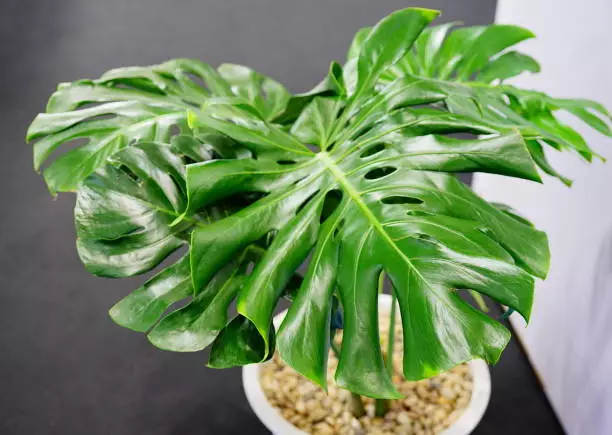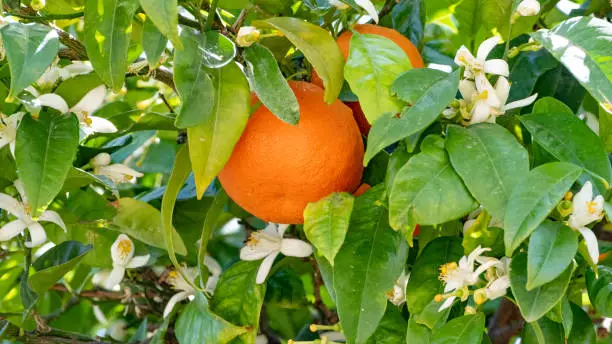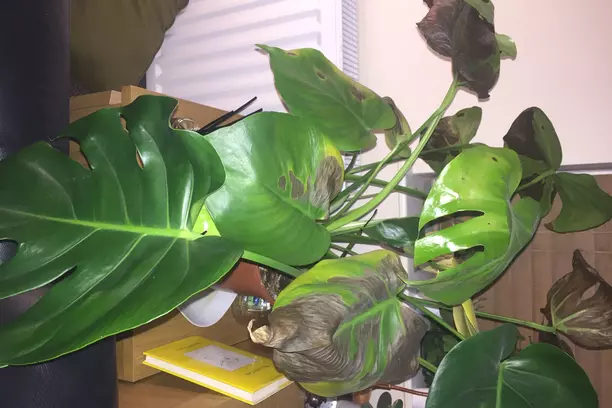Mushrooms are fascinating organisms that have been around for millions of years. They are known for their unique shape, texture, and flavor, and are used in a variety of dishes around the world. One of the most interesting characteristics of mushrooms is their role in the ecosystem. Many people wonder if mushrooms are decomposers, and the answer is yes.
As decomposers, mushrooms play a crucial role in breaking down organic matter. They help to recycle nutrients and minerals back into the soil, which is essential for the growth of plants and other organisms. In fact, without decomposers like mushrooms, the earth would be covered in dead plant and animal matter, and new life would not be able to grow.
Mushrooms are not the only decomposers in the ecosystem, but they are one of the most important. They have a unique ability to break down tough plant material, such as cellulose and lignin, which other decomposers cannot. This makes them essential for the health of the environment and the survival of many other organisms.
Are Mushrooms Decomposers
Mushrooms are a type of fungi that play a crucial role in the ecosystem. They are often associated with decomposition, but are mushrooms decomposers themselves?
The answer is yes and no. While mushrooms do play a role in decomposition, they are not primary decomposers. Primary decomposers are organisms that break down dead organic matter, such as leaves and wood, into smaller pieces. These organisms include bacteria and fungi that produce enzymes to break down the organic matter.
Mushrooms, on the other hand, are secondary decomposers. They do not break down dead organic matter directly, but instead feed on the nutrients released by primary decomposers. As primary decomposers break down organic matter, they release nutrients such as nitrogen, phosphorus, and potassium, which mushrooms absorb through their mycelium.
Mushrooms are not the only decomposing fungi, but they are one of the most recognizable. Other decomposing fungi include molds and yeasts. However, mushrooms are unique in that they produce fruiting bodies that are visible above ground.
In conclusion, mushrooms are not primary decomposers, but they do play an important role in decomposition as secondary decomposers. They feed on the nutrients released by primary decomposers and help to break down dead organic matter.
Role in Ecosystem
Mushrooms play a vital role in the ecosystem as decomposers. They break down dead organic material and recycle nutrients back into the environment. Without decomposers like mushrooms, dead organic matter would accumulate, and nutrients would not cycle through the ecosystem, causing the breakdown of the entire food chain.
Mushrooms are the fruiting bodies of fungi that grow on dead organic matter. They secrete enzymes that break down complex organic molecules into simple compounds that are then absorbed by the fungus. The nutrients are then returned to the soil, where they can be used by plants as a food source.
In this way, mushrooms contribute to the nutrient cycling in the ecosystem. They are crucial to the survival of plants, which are the primary producers in the food web. Plants rely on the nutrients provided by decomposers like mushrooms to grow and produce food.
Mushrooms are also a food source for many animals in the ecosystem, including primary consumers like insects and small mammals, and tertiary consumers like birds and larger mammals. They are an essential part of the food chain and contribute to the overall health and balance of the ecosystem.
In addition to their role in decomposition and nutrient cycling, mushrooms also have medicinal properties and are used in traditional medicine to treat a variety of ailments. They contain compounds that have anti-inflammatory, antioxidant, and immune-boosting properties.
Overall, mushrooms are an essential component of the ecosystem, contributing to the recycling of nutrients and providing a food source for many animals. Their role in decomposition and nutrient cycling is crucial to the survival of plants and the overall health of the environment.
Mushroom Anatomy and Life Cycle
Mushrooms are a type of fungus that plays a vital role in the ecosystem as decomposers. Their anatomy and life cycle are unique and fascinating.
Anatomy
Mushrooms are composed of several parts, including the cap, gills, stalk, and mycelium. The cap is the top part of the mushroom that contains the spores, while the gills are the thin, blade-like structures under the cap that produce and release the spores. The stalk is the stem of the mushroom that supports the cap, and the mycelium is the network of thread-like structures that grow underground and absorb nutrients.
The mycelium is composed of hyphae, which are long, branching filaments that extend throughout the soil. These hyphae secrete enzymes that break down organic matter, such as dead plants and animals, into smaller molecules that can be absorbed by the mycelium.
Life Cycle
The life cycle of a mushroom begins with spores, which are released from the gills of the fruiting body. These spores are carried by wind or water to new locations, where they germinate and grow into mycelium. The mycelium then grows and spreads throughout the soil, breaking down organic matter and absorbing nutrients.
When conditions are right, the mycelium produces fruiting bodies, which are the visible part of the mushroom. These fruiting bodies contain the spores, which are released into the environment to start the cycle over again.
Mushrooms can also form a symbiotic relationship with plants through mycorrhiza. Mycorrhiza is a mutually beneficial relationship between the mycelium and the roots of plants, where the mycelium provides nutrients to the plant in exchange for sugars produced by the plant.
In conclusion, mushrooms are fascinating organisms with a unique anatomy and life cycle. They play an essential role in the ecosystem as decomposers and can form symbiotic relationships with plants.
Decomposition Process
Mushrooms are decomposers that play a vital role in the ecosystem by breaking down organic materials and recycling nutrients. The decomposition process involves a complex series of chemical reactions that is facilitated by different organisms, including fungi, bacteria, and other microbes.
When organic materials such as wood, leaves, and other plant matter are left to decompose, they are broken down into simpler compounds such as carbon dioxide and water. This process is facilitated by the action of microbes that feed on the organic matter and convert it into simpler compounds.
One of the key components of organic matter is cellulose, which is a complex carbohydrate that provides structural support to plants. The decomposition of cellulose is a critical step in the decomposition process, and it is facilitated by fungi such as white rot and brown rot.
White rot fungi break down cellulose using a combination of enzymes that break down the complex carbohydrate into simpler compounds. Brown rot fungi, on the other hand, break down cellulose using a different set of enzymes that leave behind a brown residue.
Bacteria also play a crucial role in the decomposition process by breaking down organic matter into simpler compounds such as carbon dioxide and water. Heterotrophs, which are organisms that cannot produce their own food, rely on the decomposition process to obtain the nutrients they need to survive.
The decomposition process is also influenced by environmental factors such as temperature, moisture, and oxygen levels. Moisture is essential for the growth of microbes, and oxygen is required for the breakdown of organic matter.
In summary, the decomposition process is a complex series of chemical reactions that is facilitated by different organisms, including fungi, bacteria, and other microbes. Mushrooms are decomposers that play a vital role in this process by breaking down organic materials and recycling nutrients.
Types of Decomposing Mushrooms
Mushrooms are a type of fungus that plays an important role in the ecosystem as decomposers. They break down dead organic matter and recycle nutrients back into the soil. There are many different types of decomposing mushrooms, each with their own unique characteristics.
Oyster Mushrooms
Oyster mushrooms (Pleurotus ostreatus) are one of the most common decomposing mushrooms. They are saprophytic, meaning they feed on dead organic matter. Oyster mushrooms are often found growing on dead trees, logs, and stumps. They have a delicate, oyster-shaped cap and a white to light brown color.
Parasitic Mushrooms
Parasitic mushrooms are a type of decomposer that feeds on living organisms. They infect and kill their host, breaking down the organic matter as they grow. Oyster mushroom (Pleurotus ostreatus) is also a parasitic mushroom that can infect and kill nematodes.
Agaricus bisporus
Agaricus bisporus, also known as the button mushroom, is a common edible mushroom that is also a decomposer. It is often grown commercially and can be found in grocery stores. Button mushrooms are often found growing on compost piles and other organic matter.
Hypholoma fasciculare
Hypholoma fasciculare, also known as the sulphur tuft, is a decomposing mushroom that is often found growing on dead wood. It has a bright yellow to orange cap and a bitter taste. Sulphur tuft mushrooms are toxic and should not be consumed.
Winecap
Winecap mushrooms (Stropharia rugosoannulata) are a type of decomposing mushroom that is often found growing on wood chips and other organic matter. They have a reddish-brown cap and a white stem. Winecap mushrooms are edible and have a nutty flavor.
Maitake
Maitake mushrooms (Grifola frondosa) are a type of decomposing mushroom that is often found growing on dead trees and stumps. They have a distinctive frilly appearance and a rich, earthy flavor. Maitake mushrooms are highly valued for their medicinal properties.
Shitake
Shitake mushrooms (Lentinula edodes) are a type of decomposing mushroom that is often found growing on dead wood. They have a distinctive umbrella-shaped cap and a meaty, savory flavor. Shitake mushrooms are highly valued for their medicinal properties.
Paddy Straw
Paddy straw mushrooms (Volvariella volvacea) are a type of decomposing mushroom that is often found growing on rice straw. They have a delicate, straw-colored cap and a mild, nutty flavor. Paddy straw mushrooms are commonly used in Asian cuisine.
In conclusion, mushrooms play an important role as decomposers in the ecosystem. There are many different types of decomposing mushrooms, each with their own unique characteristics and uses.
Mushrooms and Other Decomposers
Mushrooms are a type of decomposer that play a vital role in breaking down organic matter in the environment. They are part of a larger group of decomposers that includes insects, detritivores, earthworms, termites, millipedes, detritivore, algae, protozoa, consumers, dung flies, dung beetles, snails, woodlice, and nematodes.
Decomposers are organisms that break down dead organic matter into simpler compounds that can be used by other organisms. They play a critical role in nutrient cycling and soil formation. Without decomposers, the world would be overrun with dead organic matter, and nutrients would be locked up in that matter, making them unavailable to other organisms.
Mushrooms are particularly important decomposers in forests, where they break down dead plant material, such as leaves, twigs, and fallen trees. They also help recycle nutrients by releasing them back into the soil, where they can be taken up by other plants.
In addition to mushrooms, other decomposers also play an essential role in nutrient cycling. For example, insects and other detritivores consume dead organic matter, breaking it down into smaller pieces that can be further decomposed by other organisms. Earthworms are also important decomposers, as they consume dead organic matter and help aerate the soil.
Termites and millipedes are other important decomposers that help break down dead organic matter. Termites are particularly important in tropical ecosystems, where they can break down large amounts of wood and other plant material. Millipedes are also important decomposers, as they consume dead leaves and other plant material.
Algae and protozoa are other important decomposers that help break down dead organic matter in aquatic ecosystems. They play a critical role in nutrient cycling and help keep waterways clean.
Consumers, such as dung flies, dung beetles, snails, and woodlice, also play an essential role in nutrient cycling by consuming dead organic matter and releasing nutrients back into the environment. For example, dung beetles help break down animal waste, releasing nutrients back into the soil where they can be taken up by plants.
Nematodes are another important group of decomposers that help break down dead organic matter. They are particularly important in soil ecosystems, where they consume bacteria, fungi, and other microorganisms that help break down dead organic matter.
In conclusion, mushrooms and other decomposers play a critical role in breaking down dead organic matter and recycling nutrients back into the environment. Without decomposers, the world would be overrun with dead organic matter, and nutrients would be locked up in that matter, making them unavailable to other organisms.
Beneficial Aspects of Mushroom Decomposition
Mushrooms are known for their ability to decompose organic matter, which makes them an essential part of the ecosystem. The decomposition process is beneficial in many ways, including the following:
Fertilizing the soil
Mushroom decomposition releases essential nutrients, including nitrogen, phosphate ions, and other absorbable nutrients, which are beneficial to plant growth. The decomposition process also enhances the soil’s ability to hold water, which is essential for healthy plant growth.
Improving soil quality
Mushroom compost is an excellent source of organic matter that can improve soil quality. It contains a high concentration of carbohydrates, which are a source of energy for beneficial microorganisms in the soil. These microorganisms, in turn, help to break down organic matter and release nutrients that are essential for plant growth.
Enhancing symbiosis
Mushrooms form symbiotic relationships with other organisms in the soil, such as mycorrhizal fungi. These fungi help to increase the surface area of plant roots, allowing them to absorb more nutrients from the soil. This symbiotic relationship is essential for healthy plant growth and can help to improve the overall health of the soil.
Mulching
Mushroom compost is an excellent material for mulching. It can help to retain moisture in the soil, suppress weed growth, and regulate soil temperature. Mushroom compost is also an excellent source of iron, which is essential for healthy plant growth.
Home gardening
Mushroom compost is an excellent material for home gardening. It is easy to use, readily available, and can improve soil quality. It is also an excellent source of nutrients, making it an ideal fertilizer for plants.
In conclusion, mushroom decomposition is a beneficial process that plays an essential role in the ecosystem. It can help to fertilize the soil, improve soil quality, enhance symbiosis, and provide an excellent source of mulch and fertilizer for home gardening.
Mushrooms and Decomposition of Unusual Substances
Mushrooms are well-known decomposers, breaking down organic matter and recycling nutrients back into the ecosystem. However, they are also capable of decomposing unusual substances, such as plastic, feces, and litter.
Plastic Decomposition
Mushrooms have been found to break down certain types of plastic, such as polystyrene and polyurethane. A study conducted by researchers at the Chinese Academy of Sciences found that the fungus Pestalotiopsis microspora can break down polystyrene, a common type of plastic used in packaging materials. The fungus is able to do this by secreting enzymes that break down the chemical bonds in the plastic, converting it into carbon dioxide and water.
Feces Decomposition
Mushrooms are also important decomposers of animal feces, breaking down the organic matter and returning nutrients to the soil. In fact, some species of mushrooms are specifically adapted to decompose feces, such as the dung-loving Psilocybe cubensis. These mushrooms are commonly found growing on cow and horse manure.
Saprobes
Mushrooms are classified as saprobes, meaning they obtain their nutrients from dead or decaying organic matter. They play a vital role in the ecosystem by breaking down organic matter and recycling nutrients back into the soil. This process is essential for the growth of new plants and the survival of other organisms.
Pathogenic Fungi
While most mushrooms are beneficial decomposers, some species can be pathogenic and cause harm to humans and other animals. For example, the Amanita phalloides mushroom contains a deadly toxin that can cause liver failure and death. It is important to be able to identify different species of mushrooms in order to avoid consuming poisonous ones.
Litter-Decomposing Fungi
Mushrooms are also important decomposers of litter, such as fallen leaves and branches. They break down the organic matter, releasing nutrients back into the soil and making them available for other organisms to use. This process is essential for maintaining a healthy ecosystem.
In conclusion, mushrooms are versatile decomposers capable of breaking down a wide variety of organic matter, including unusual substances such as plastic, feces, and litter. While most mushrooms are beneficial, some species can be pathogenic and cause harm to humans and other animals. It is important to understand the role of mushrooms in the ecosystem and to be able to identify different species in order to avoid consuming poisonous ones.
Frequently Asked Questions
Do mushrooms play a role in decomposition?
Yes, mushrooms play a crucial role in decomposition. They are known as decomposers, which means that they break down dead organic matter such as leaves, wood, and other plant material. Without decomposers like mushrooms, the Earth would be covered in a thick layer of dead organic matter, making it difficult for new life to grow.
What is the relationship between fungi and decomposition?
Fungi and decomposition have a close relationship. Fungi are the primary decomposers in most ecosystems, breaking down complex organic compounds into simpler ones that can be used by other organisms. They do this by releasing enzymes that break down the organic matter into smaller molecules that can be absorbed by the fungi.
How do mushrooms break down organic matter?
Mushrooms break down organic matter by releasing enzymes that break down complex organic compounds into simpler ones. The mycelium of the mushroom then absorbs these simpler compounds and uses them for energy and growth. In the process, the mushroom helps to recycle nutrients back into the environment, making them available for other organisms to use.
Are mushrooms considered decomposers in the food chain?
Yes, mushrooms are considered decomposers in the food chain. They are an important link in the chain of energy flow, breaking down dead organic matter and releasing nutrients back into the environment. This makes them a vital part of many ecosystems, providing food and energy for other organisms.
What is the difference between a decomposer and a producer?
A decomposer is an organism that breaks down dead organic matter into simpler compounds, while a producer is an organism that produces its own food through photosynthesis. Decomposers like mushrooms help to break down dead organic matter and recycle nutrients back into the environment, while producers like plants and algae produce their own food through photosynthesis.
Can mushrooms decompose animal matter?
Yes, mushrooms can decompose animal matter. While they primarily feed on dead plant material, some species of mushrooms are also capable of breaking down animal matter such as dead insects and animal carcasses. This makes them an important part of the ecosystem, helping to recycle nutrients and keep the environment clean.
References
- Course Hero. (n.d.). Ecology of Fungi Study Guide. Retrieved from https://www.coursehero.com/study-guides/wmopen-biology2/ecology-of-fungi/
- US Forest Service. (2002, April). Importance of Fungi in Forest Ecosystems. Retrieved from https://apps.fs.usda.gov/r6_decaid/views/fungi.html



